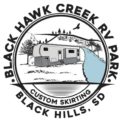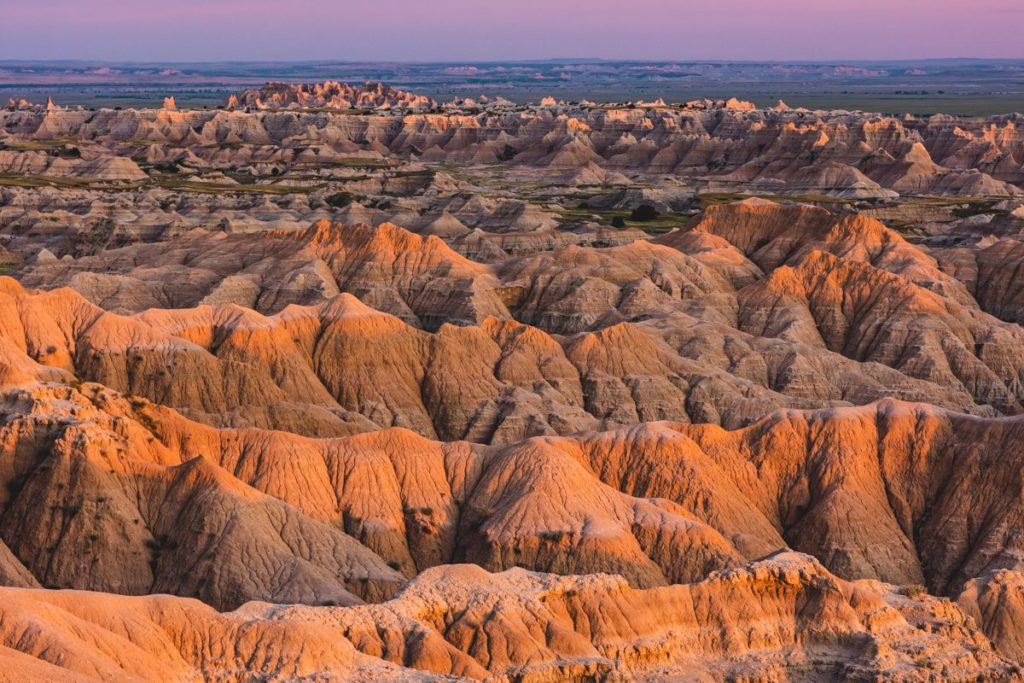The term “Badlands” conjures images of a rugged, otherworldly landscape, and rightly so. Badlands are geographical features characterized by their eroded and intricate rock formations, often resembling a desolate yet captivating terrain. These unique landscapes of South Dakota’s Badlands National Park captivate the imagination with their surreal beauty and the stories they hold within their layers which are sought after for their breathtaking photos that you could take in the famous overlook.
Why Do They Call It Badlands?
The name “Badlands” originates from the Lakota Sioux Native American term “mako sica,” which roughly translates to “land that is difficult to traverse.” The name perfectly encapsulates the rugged and challenging terrain found in Badlands National Park in South Dakota. The area is characterized by its dramatic rock formations, deep canyons, and unique geological features, making travel through the landscape difficult. The name “Badlands” serves as a fitting description of the rugged and striking natural beauty that defines this region.
How Are Badlands Formed?

Badlands are formed through a combination of geological processes, primarily the erosion of sedimentary rock layers over millions of years. Factors like wind, water, and ice sculpt the terrain, creating deep canyons, sharp ridges, and distinctive spires. The soft rock layers are more easily eroded, leaving behind the striking and dramatic formations that define badland landscapes.
Three Characteristics of Badlands
- Striking Rock Formations: Badlands are renowned for their dramatic rock formations, ranging from towering spires to deeply carved canyons. These formations are the result of intricate erosion patterns that have shaped the landscape over millennia.
- Erosion and Sediment: Erosion is a constant force, sculpting the terrain and unveiling layers of sedimentary rock. The diverse colors of these layers offer a window into the Earth’s geological history, showcasing millions of years of sediment deposition.
- Unique Flora and Fauna: Despite the challenging conditions, Badlands support an array of hardy plant and animal life. Bison, pronghorn, and bighorn sheep roam the landscape, and the flora includes prairie grasses and wildflowers adapted to the arid environment.
Examples of Badlands
While Badlands can be found around the world, one notable example is Badlands National Park in South Dakota, USA. This park boasts a rich tapestry of Badlands landscapes, with its distinctive rock formations, vibrant colors, and unique flora and fauna serving as a hallmark of the terrain.

Geographic Distribution
Badlands can be found across the globe, each with its own unique characteristics. Notable locations include Badlands National Park in South Dakota, the Badlands of Alberta, Canada, and even areas in Spain and China. In the United States, badland landscapes extend across regions like South Dakota, North Dakota, and Nebraska.
Exploring Badlands National Park
Badlands National Park, situated in South Dakota, offers an unparalleled opportunity to immerse yourself in the Badlands experience. It consists of two sections—the North Unit and the Stronghold Unit—encompassing over 244,000 acres of awe-inspiring landscapes. The park’s iconic Big Badlands Overlook offers breathtaking panoramic views that capture the essence of the terrain’s unique beauty.
When planning a trip to Badlands National Park, consider the following tips:
- Season Matters: Summers can be hot, while winters are cold. Spring and fall offer milder weather and fewer crowds.
- Stay Hydrated: Bring water, sunscreen, and a hat, as the climate can be arid.
- Hiking Adventures: Explore the park’s hiking trails, such as the Notch Trail and Door Trail, for unique perspectives.
- Wildlife Watching: Keep an eye out for bison, pronghorns, and other wildlife that roam the area.
Must-See Spots in Badlands National Park
- Big Badlands Overlook: This vantage point offers sweeping views of the sprawling landscapes, making it an ideal spot to capture stunning Badlands National Park photos. Sunrise and sunset views are particularly breathtaking.
- Door and Window Trails: These short yet rewarding hikes lead to overlooks that frame the unique rock formations, allowing you to witness the interplay of light and shadow across the landscape.
- Fossil Exhibit Trail: Explore the Fossil Exhibit Trail to discover ancient treasures and replicas of prehistoric creatures that once roamed the Badlands.
Reaching Badlands National Park
The majority of travelers heading to Badlands National Park arrive via Rapid City Regional Airport (RAP). Rapid City, often referred to as the Gateway to the Black Hills, serves as an ideal stopover. While here, discover the allure of the Journey Museum and Learning Center, the captivating City of Presidents bronze statue display downtown, the vibrant and art-filled Art Alley, and the interactive Reptile Gardens. Housing one of the world’s most extensive reptile collections, including the renowned Maniac, the largest crocodile in the Northern Hemisphere, a visit here is an absolute must, particularly during feeding sessions!
Things to Do in Badlands National Park
Wildlife Encounters
Witness the majesty of American bison as they roam through nearly every corner of the North Unit, excluding the vicinity surrounding the visitor center. Alongside them, the North Unit offers sightings of bighorn sheep, prairie dogs, black-footed ferrets, bobcats, and pronghorns. To ensure both your safety and theirs, remember to maintain a minimum distance of 100 feet from all wild animals. If an animal reacts to your presence, it’s a sign that you’re in close proximity and should adjust your distance accordingly.
Unearthing Dinosaur Remnants
Merely five miles north of the Ben Reifel Visitor Center, the Fossil Discovery Trail spans a quarter-mile with paved walkways adorned with exhibits that introduce the park’s fascinating paleontology. During the summer season, seize the opportunity to attend fossil talks conducted here twice daily. Be sure to consult the visitor center for the exact timing of these informative sessions.
Cycling Adventures
Designated paved, gravel, and dirt roads within Badlands National Park cater to cyclists seeking biking experiences. However, it’s advisable for cyclists to possess a certain level of experience. Along Badlands Loop Road, cyclists should be prepared for limited shoulder space and heightened traffic from Memorial Day to Labor Day. It’s essential to note that water sources are scarce along the route, so ensure you’re adequately equipped for hydration. For detailed insights into specific biking loops, consult nps.gov.
Embrace the Starlit Sky
The night sky over Badlands offers unparalleled clarity, making stargazing an extraordinary experience. From Memorial Day through Labor Day, an evening ranger program sets the stage for celestial exploration at the amphitheater near Cedar Park Campground. Rangers bring forth substantial telescopes, guiding you through constellations, stars, and planets, weather permitting. With a touch of luck, you might even catch a glimpse of the International Space Station traversing overhead! Night sky observations commence around 9:45 p.m. in May, June, and July, while August and September see the spectacle starting at 9:15 p.m.
Hiking in Badlands National Park
Venturing into the captivating landscapes of Badlands National Park invites you to embark on a unique hiking experience. While most designated trails are concentrated in the southeastern portion of the North Unit, close to the Ben Reifel Visitor Center, the remarkable aspect is that the big badlands overlook differentiates itself from many other national parks. Unlike conventional norms, in Badlands, you have the freedom to explore beyond established trails.
A short distance east of the visitor center lies a parking area, offering access to Cliff Shelf. This half-mile boardwalk, constituting a round trip, winds through a charming grove of junipers along the Badland Wall. With an elevation gain of 200 feet, this trail provides captivating vistas of the park’s southern expanses, creating an opportunity for an enriching hiking escapade.
Looking for a place to stay in Black Hills, SD?
Ready to experience the magic of the Badlands National Park firsthand? After a day of exploration and photos, retreat to the comfort of Black Hawk Creek RV Campgrounds. Nestled amidst the beauty of South Dakota’s landscapes, it’s the perfect home base for your adventure. With amenities like spacious RV sites, cabins, and a serene atmosphere, you’ll find relaxation and rejuvenation waiting for you.
As you set your sights on the mysterious allure of the Badlands, remember that Black Hawk Creek RV Campgrounds invites you to create unforgettable memories and embark on a journey into the heart of nature’s wonders. Book your stay today and let the adventure begin!

